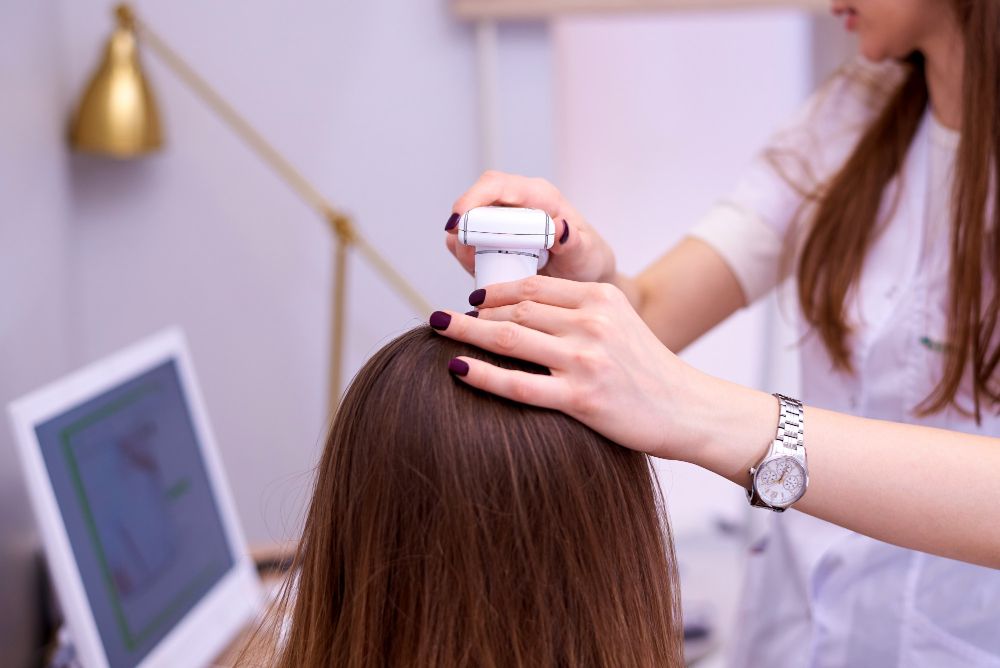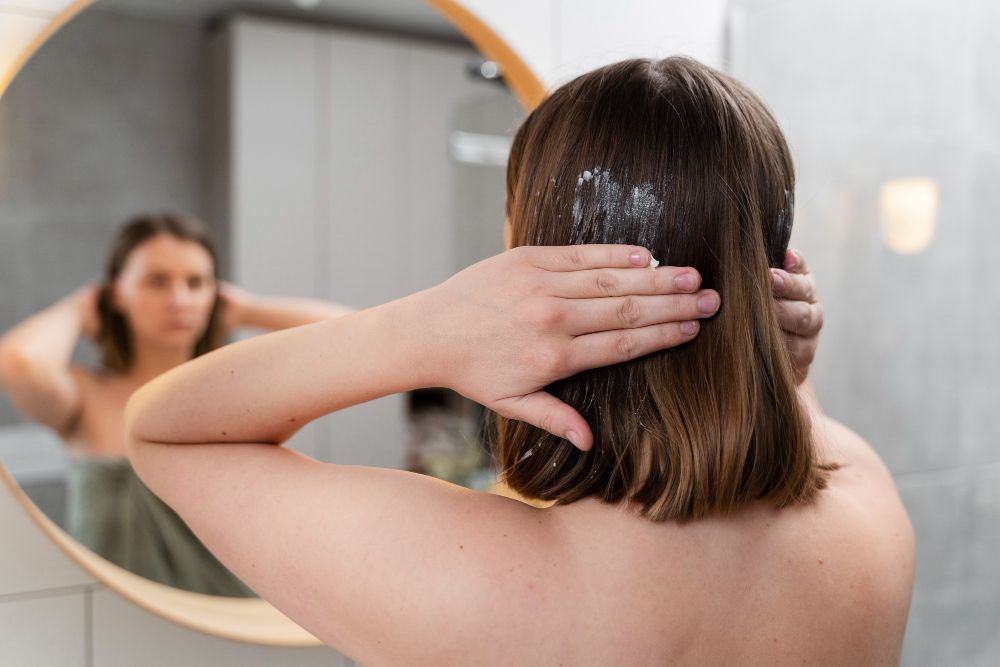- Home
- Trend
- Weight Loss Strategies
- Acne Tips
- Hair Health Information
- Blemish Removal Tips
- Acne Scar Removal Tips
- Muscle Building Techniques
- Intimate Care Tips
- Postpartum Intimate Care
- Eye Bags Wiki
- Tips for Face Slimming
- Secret of Permanent Hair Removal
- Breast Enlargement Tips
- Cure to Snoring
- Marionette Lines
- Skin-Tightening Secrets
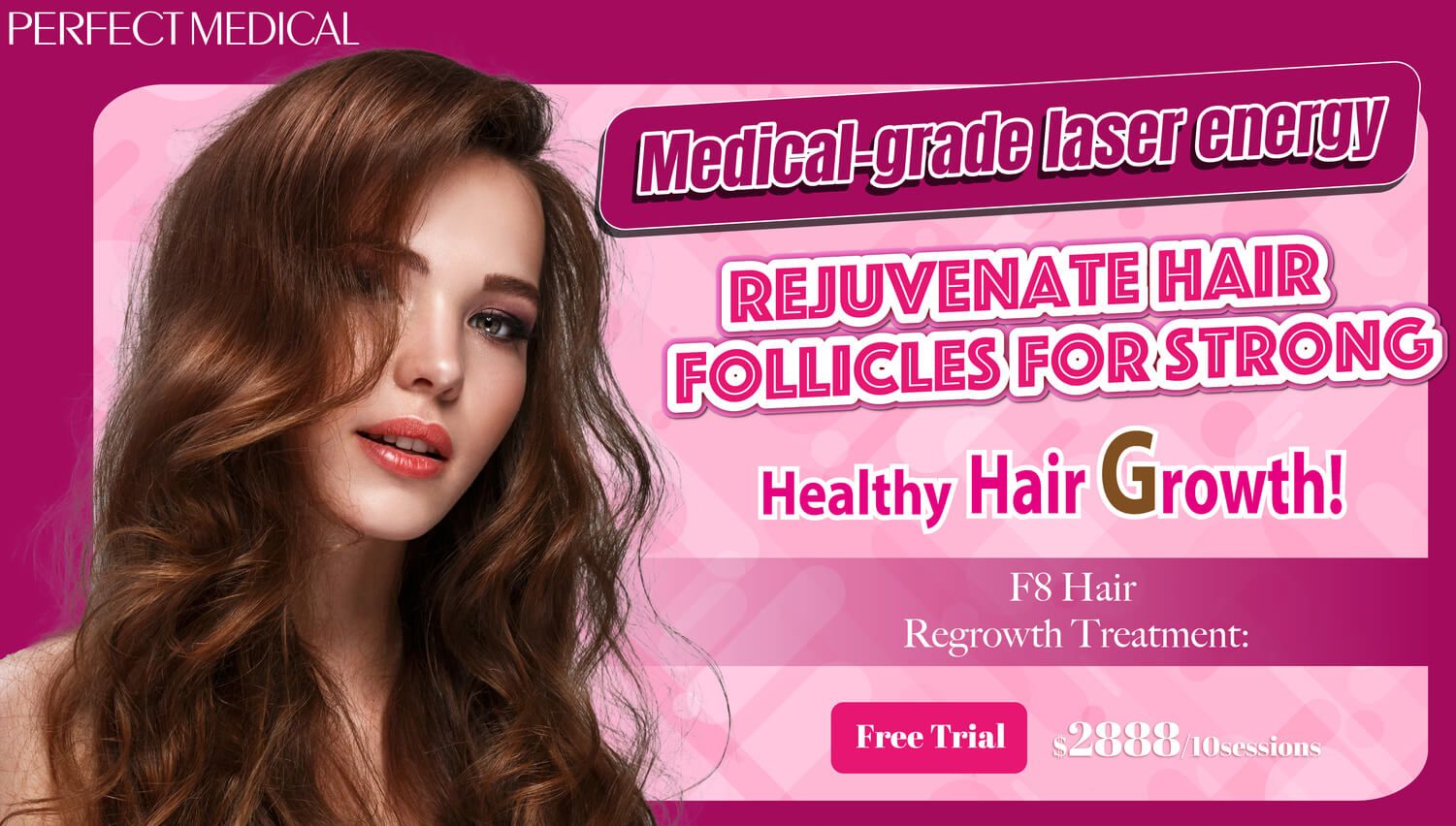
免費體驗
F8 Hair Regrowth Treatment
1 Minute Self-Registration
Date should not be before minimal date
Ever found yourself fretting over hair in your shower drain or on your hairbrush? Let's explore why shedding is a part of a healthy hair lifecycle and how to spot signs when it might be more than just normal loss.
1
The Science Behind Hair Shedding: Why is it Normal?
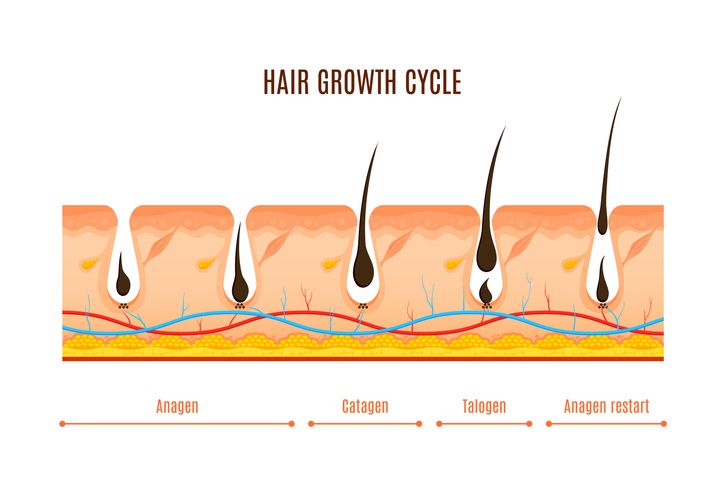
Hair growth is a dynamic process, encompassing growth, transition, and resting phases. The telogen phase, or resting phase, naturally ends with shedding as new hair prepares to grow in its place. Normally, dropping about 50 to 100 strands per day is nothing to worry about. This turnover is a crucial aspect of maintaining vibrant, healthy hair, with hormones like testosterone and estrogen playing key roles in regulating these cycles.
2
How Much Hair Shedding is Normal?
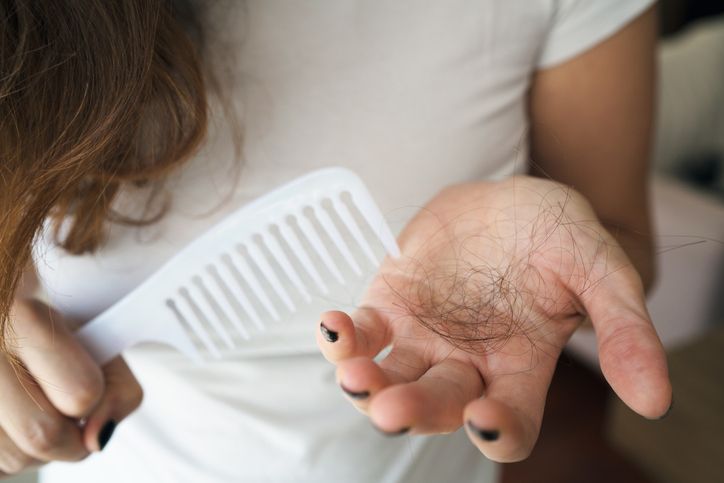
While the average is to shed 50 to 100 hairs a day, this can vary slightly from person to person. Remember, seeing more hairs in your brush after washing isn't necessarily a sign of increased shedding; it’s often just the time when already loose hairs tend to fall.
3
What are the 7 Signs of Abnormal Hair Loss?
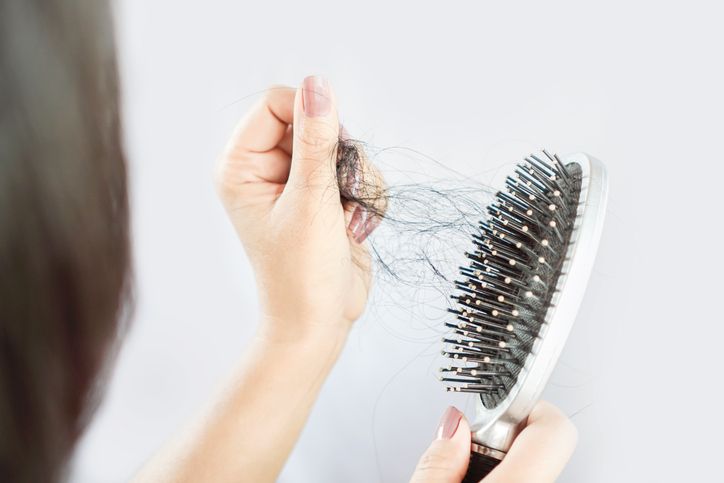
When hair loss deviates from the norm, it's crucial to recognize these signals:
Excessive Hair Clumps in the Shower and on Your Pillowcase
While some hair loss during brushing is normal due to detangling, an increase could indicate weakened hair shafts or cuticles. Finding thick clumps of hair more frequently than usual could also be a sign that more of your hair is entering the resting phase simultaneously than is typical, leading to noticeable accumulations in places you might not expect to see them.
Excessive Hair Fall While Brushing
While a few hairs on your brush isn't unusual, a sudden increase can be a red flag. This change could indicate that something is affecting the usual strength and durability of your hair, making it more prone to breaking or falling out during routine brushing.
Significantly Thinner Hair
Noticing your ponytail is thinner or that more of your scalp is visible can be startling. This thinning typically means there's a reduction in hair density, with fewer new hairs growing in to replace those that have shed. Beware that changes in hair density can be gradual and sometimes only noticed over time. To be accurate, you can track the thickness of ponytails or the visibility of the scalp under various lighting conditions.
Exposed Scalp
Developing bald patches or seeing your part widen unexpectedly can signal that the normal hair growth cycle is disrupted, with not enough new hair coming in to maintain the usual scalp coverage.
Receding Hairline
A receding hairline, whether creeping back from the temples or forehead, is a visible change that can occur gradually. It's often more noticeable as a broad change in hairline shape. A receding hairline might progress to more noticeable balding, particularly in patterns typical of androgenetic alopecia.
Sensitive Scalp
Possible reasons for scalp sensitivity include dermatological conditions like psoriasis or dermatitis. Symptoms like scalp tenderness, itchiness, or visible signs of irritation such as redness or scaling can exacerbate hair shedding issues, as a compromised scalp environment can affect the overall health of your hair.
Body Hair Loss
Loss of hair from other parts of the body, beyond the usual shedding from your scalp, can indicate systemic issues or conditions such as alopecia areata or hormonal imbalances.
4
7 Steps Guide to Stop Hair Loss and Improve Hair Health
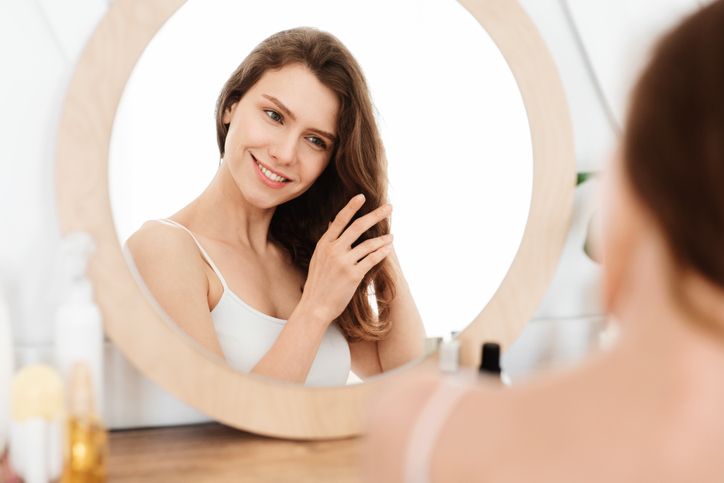
Understanding the causes behind excessive hair shedding is the first step toward effective management and treatment. Let's explore some of the most common factors that might be contributing to your hair loss.
Genetics
Hereditary hair loss, known scientifically as androgenetic alopecia, is perhaps the most well-known cause of hair thinning and loss. This genetic predisposition affects both men and women and can start as early as one's teenage years. In men, it often presents as a receding hairline and bald spots, while women might notice a gradual thinning of hair, especially at the crown. The sensitivity of hair follicles to hormonal changes plays a significant role here, particularly to dihydrotestosterone (DHT), a derivative of testosterone.
Aging
As we age, the rate of hair growth naturally slows down. Hair strands become smaller, have less pigment, and the hair follicles produce less hair. This change, coupled with the natural aging of scalp skin, often leads to thinner, more fragile hair.
Inflamed Scalp
An inflamed scalp can be a sign of underlying skin conditions such as dermatitis or psoriasis, which can disrupt the natural hair growth cycle. Inflammation can damage the hair follicle, leading to weaker, thinner hair or hair loss. Managing scalp health with appropriate treatments and gentle hair care can help mitigate this issue.
Tight Hairstyles
Pulling your hair back tightly in braids, ponytails, or buns can lead to a type of hair loss known as traction alopecia. This is caused by constant tension on the hair follicles, which can lead to permanent damage if the hairstyle is worn consistently over a long period. Letting your hair down regularly and varying hairstyles can help prevent this type of hair loss.
Overuse of Hair Heating Tools
The frequent use of hair dryers, straightening irons, and curling wands can take a toll on your tresses. High temperatures can weaken hair proteins and cause brittleness and breakage. Minimizing heat styling and using protective sprays can shield hair from severe damage.
Poor Diet
Your hair needs a balanced diet just as much as the rest of your body does. Lack of essential nutrients like iron, vitamin D, and proteins can lead to hair loss. Ensuring a balanced diet rich in vitamins, minerals, and antioxidants can support hair health and reduce shedding.
Hormonal Imbalance
Changes in hormones can wreak havoc on hair growth. Events such as pregnancy, childbirth, menopause, or thyroid issues can trigger significant hair loss. In many cases, this type of hair loss is temporary and may resolve once hormones rebalance.
Medical Disorders and Medications
Some medical conditions, like alopecia areata—an autoimmune disease where the body attacks its own hair follicles—can cause patchy hair loss. Scalp infections, lupus, and other diseases can also lead to hair loss. Additionally, certain medications, including chemotherapy drugs, blood thinners, and antidepressants, are known to cause hair loss as a side effect. It's important to consult with a healthcare provider to determine if your medication or a medical condition is contributing to your hair loss, as management or treatment adjustments may help.
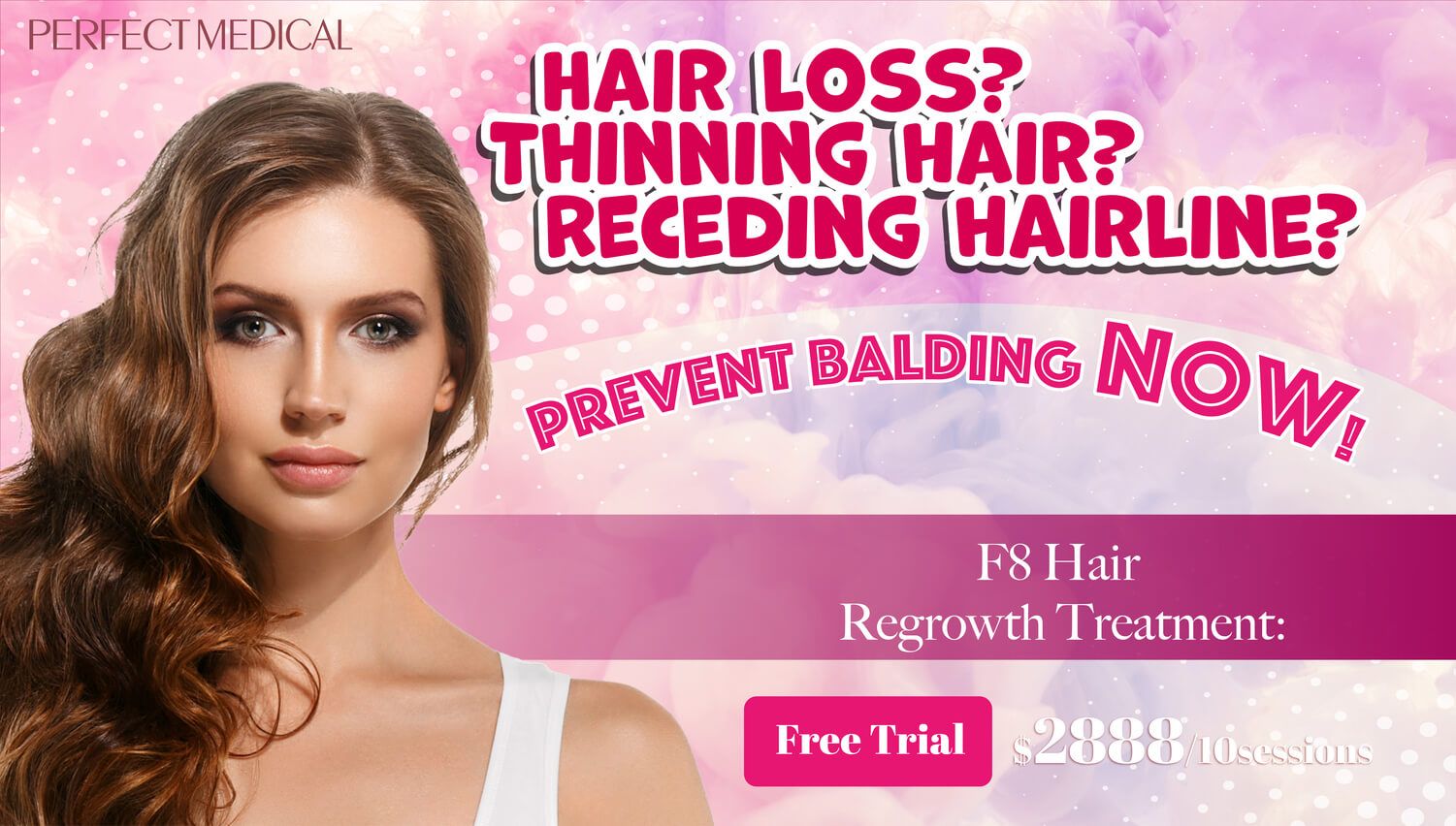
免費體驗
F8 Hair Regrowth Treatment
1 Minute Self-Registration
Date should not be before minimal date
5
7 Steps Guide to Stop Hair Loss and Improve Hair Health

Understanding the underlying causes of hair loss is key to effective treatment and hair health improvement. Let’s explore actionable steps to help combat hair loss.
Step 1: Double Shampooing
Have you ever considered washing your hair twice in one shower? Double shampooing first targets removing dirt, oil, and product buildup, making it especially useful for those with dense hair or heavy product use. The second wash focuses on deeply cleansing the scalp. It’s like giving your scalp a fresh start, but don’t overdo it—too much can strip essential oils from your hair. Limit double shampooing to 2-3 times a week, using a gentle, sulfate-free shampoo. If your hair is dry, damaged, or if you have scalp conditions, check with a dermatologist before starting this routine.
Step 2: Use a Tangle Teezer
Managing tangles without breaking hair is crucial. A Tangle Teezer, with its flexible and varied-length bristles, gently eases out knots, reducing breakage and minimizing hair loss during styling. It's not just about preventing hair loss; it's about maintaining the strength and integrity of your hair as it grows. Suitable for daily use on both wet and dry hair, it helps keep your hair manageable and healthy. If a Tangle Teezer isn’t right for you, consider a wide-tooth comb or a boar bristle brush as alternatives for gentle detangling and natural oil distribution.
Step 3: Build a Hair Care Routine with Professional Hair Care Products
Creating a personalized hair care routine is a game-changer for keeping your hair healthy and minimizing hair loss. It’s all about finding the right products that cater to your specific hair type and concerns. If your hair is dry, you’ll want to focus on hydration. Oily hair? Look for products that keep your scalp clean without over-stripping. The trick is to select a gentle shampoo and conditioner tailored for your hair type and then complement it with treatments that address your unique needs, like nourishing masks for dry hair or scalp scrubs for an oily scalp.
Here’s a tip: don’t wash your hair every day unless it’s really necessary. Overwashing can lead to dryness and irritate your scalp, leading to more hair loss. Instead, try washing two to three times a week, and always finish with a conditioner to keep your hair smooth and manageable. When it comes to styling, remember to use a heat protectant spray before using any hot tools to prevent breakage and keep your hair looking fabulous.
Step 4: Massage Your Scalp Regularly with Hair Oils
There’s something quite relaxing about massaging your scalp with hair oils, and it could be beneficial for your hair growth too. Oils like coconut, argan, and rosemary not only add shine but can also help maintain scalp health and lock in moisture. While the evidence linking hair oils directly to reducing hair loss isn't conclusive, they can definitely help improve the overall health of your hair.
If you decide to incorporate hair oils into your routine, aim for once or twice a week application. This is enough to reap the benefits without overburdening your hair. Apply the oil to the ends and mid-lengths of your hair; avoid the roots if your hair tends to get oily quickly. If you’re crafting a homemade blend, mix a few drops of essential oils with a carrier oil before application.
However, if you have very oily hair or conditions like eczema or psoriasis, you might want to proceed with caution. Oils can exacerbate these conditions for some people. Watch out for signs like increased oiliness, irritation, or breakouts around your scalp, which are cues to ease up on the oil treatments.
Step 5: Take Hair Growth Supplements
Navigating the world of hair growth supplements can be tricky, but the right ones might just give your locks the boost they need. Here’s a little rundown:
- Biotin: This B vitamin is a fan favorite for hair growth. It’s rare to be deficient since it’s widely available in food, but a little extra can sometimes help. - Zinc: Essential for hair follicle health, zinc can be a game-changer unless you overdo it. Too much can actually cause problems, so balance is key. - Iron: Especially crucial for women who might lose more iron, this mineral is vital if you’re finding too many hairs in your shower drain. - Vitamin D: Low levels can mess with your hair follicles, so keeping your vitamin D in check is a good move for your scalp health. - Fish Oil: Rich in omega-3 fatty acids, it’s known for making hair shiny and new. - Saw Palmetto: Some guys swear by this for male pattern baldness, although the jury’s still out on its effectiveness.
Remember, supplements can interact with other meds and might not be necessary if your diet is already balanced. Always chat with your doc before starting any new supplement routine.
Step 6: Invest in Hair Growth Devices
Let’s talk gadgets! Hair growth devices are the high-tech approach to boosting your mane. Here are a few types:
- Laser Hair Growth Caps/Helmets: These bad boys use low-level laser therapy to encourage your follicles to wake up and get growing. - LED Light Therapy Combs: Like the laser caps but with LED lights, these combs are all about bringing some light to your scalp. - Microneedling Scalp Rollers: A bit scarier sounding, these rollers make tiny punctures in your scalp. It sounds wild, but it’s all about stimulating that natural healing process which can help with hair growth.
While the science is still a bit up in the air, many users see great results. Just make sure to follow the directions closely—how often to use them, how to keep them clean, and any safety precautions to follow. And, of course, if you notice irritation or other side effects, it’s best to take a break and consult a healthcare provider.
Step 7: Improve Your Life Quality
Did you know that improving your life quality can have a major impact on your hair health? Stress management, a nutritious diet, regular exercise, and sufficient sleep all play critical roles in nurturing healthier hair growth and can even help reduce hair loss.
Stress Management: Chronic stress is a fun-spoiler, especially for your hair. It can mess with your hair growth cycle and lead to noticeable hair loss. Finding your zen through meditation, yoga, or even deep breathing can significantly help manage those stress levels and might just keep more hair on your head.
Diet: Eating right is crucial. A balanced diet filled with proteins, iron, vitamin D, and omega-3 fatty acids gives your follicles everything they need to thrive. So, make sure you’re not skipping on nutrient-rich foods like leafy greens, eggs, and fatty fish, which are all fantastic for scalp health and hair growth.
Exercise: Get moving to improve circulation, not just in your heart but all the way up to your scalp. Better blood flow means more nutrients and oxygen that help promote hair growth.
Sleep: Your body repairs itself while you snooze, including your hair follicles. Clocking in 7-8 hours of good sleep is essential for balancing those hair growth hormones and preventing hair loss.
Step 8: Consider Minoxidil
For anyone dealing with hereditary hair loss, also known as androgenetic alopecia, Minoxidil might be worth considering. Here’s why:
Minoxidil is celebrated for potentially extending the hair growth phase and enhancing blood flow to the scalp, which may help with hair thinning. It doesn’t promise overnight success but can gradually slow down hair loss and possibly encourage new hair growth with diligent use.
You'll want to apply Minoxidil directly to your scalp twice daily, focusing on the thinning areas. Side effects like scalp irritation or dryness are fairly common, though more serious reactions are rare. Keep in mind, it’s not suitable for everyone—pregnant women, anyone under 18, or those with certain scalp conditions should avoid it.
Always consult a healthcare professional before starting Minoxidil to ensure it’s the right fit for your hair loss needs and to determine the correct dosage.
6
Revitalize Your Hair with F8 Hair Regrowth Treatment: A Non-Surgical Solution for Optimal Scalp Health
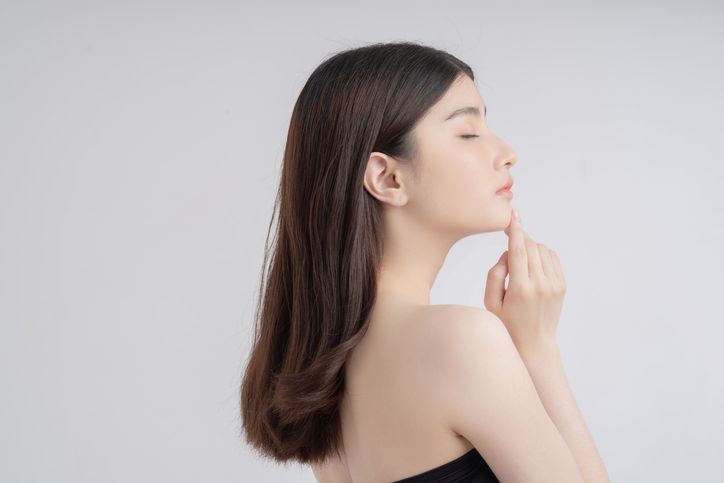
Are you on the lookout for a way to boost your hair's growth and strength? Dive into Perfect Medical’s F8 Hair Regrowth Treatment, the premier choice in Hong Kong for anyone looking for a safe and effective hair rejuvenation solution.
Picture a treatment that rejuvenates your hair follicles comfortably. That’s the magic of our bio-laser technology. It gently moves over your scalp, deeply reaching the hair follicles to stimulate natural and strong hair growth. More than just promoting growth, this laser energy fortifies capillaries and improves blood circulation, ensuring your scalp and hair roots receive all the essential nutrients they need for the best hair health.
In each session, we enhance the treatment with a specialized, medical-grade hydrating serum applied to your scalp. This serum not only increases moisture and nutrient absorption at the roots but also regulates oil production, fostering the ideal conditions for hair follicles to flourish. The outcome? A significant decrease in hair loss and lush, full hair growth in as little as three months!
Plus, our bio-laser treatment is entirely pain-free and doesn’t irritate the skin, making the experience comfortable with zero downtime. You can effortlessly resume your daily activities right after each session.
Ready to witness the transformation? Schedule a complimentary trial of Perfect Medical’s F8 Hair Regrowth Treatment online, which includes a free hair and scalp analysis. Reclaim your hair’s vitality and elevate your confidence with visible results.
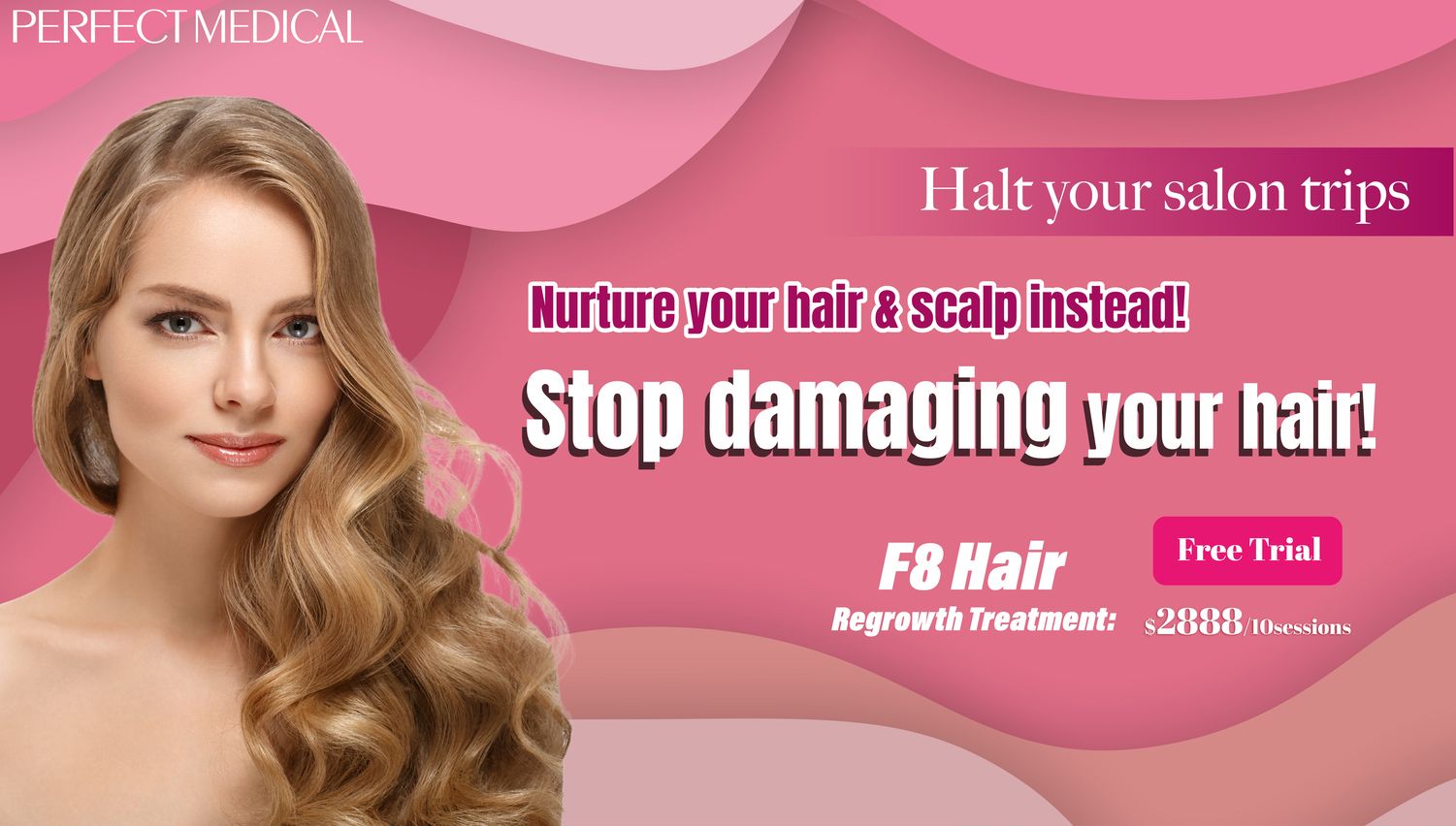
免費體驗
F8 Hair Regrowth Treatment
1 Minute Self-Registration
Date should not be before minimal date
FAQ

What is the difference between hair shedding and hair breakage?
Hair shedding is the natural loss of hair from the root, typically seen in the shower or hairbrush. Hair breakage involves the snapping of hair shafts, often caused by damage or dryness, and does not affect the follicle.
Is it normal to lose more hair in certain seasons?
Yes, many people experience seasonal hair shedding, particularly in the fall. This is believed to be due to changes in daylight hours affecting hair growth cycles.
Can washing my hair affect how much hair I lose?
Washing your hair might seem like it causes more hair loss, but it actually just helps to remove hairs that have already detached from your scalp. Regular washing is part of a healthy hair care routine.
Why Choose Perfect Medical's F8 Hair Regrowth Treatment for Enhanced Hair Growth?
Perfect Medical’s F8 Hair Regrowth Treatment is renowned for fostering faster, stronger hair growth. Leveraging cutting-edge bio-laser technology, it activates hair follicles effectively and boosts scalp circulation. This high-tech method ensures that your scalp receives the nutrients it needs, leading to healthier and more vibrant hair growth.
How Does Perfect Medical's F8 Hair Regrowth Treatment Compare to Over-the-Counter Minoxidil and Hair Oils?
Perfect Medical’s F8 Hair Regrowth Treatment stands out by providing a non-invasive, laser-based alternative to over-the-counter minoxidil and hair oils. Unlike these traditional treatments, which can cause side effects like scalp irritation, the F8 treatment uses precise laser technology to target hair follicles directly. This results in a more comfortable treatment experience and noticeable hair growth in just three months, without the typical discomfort or side effects.






